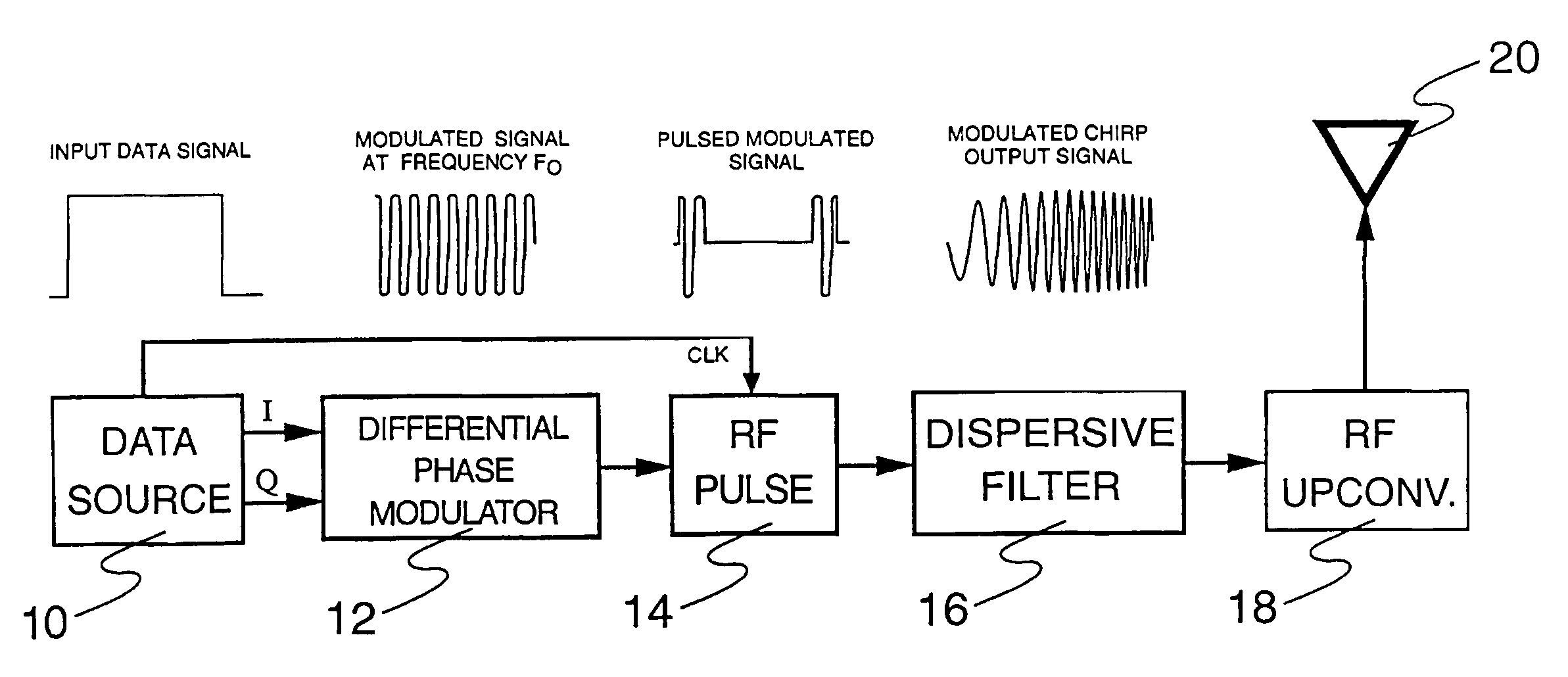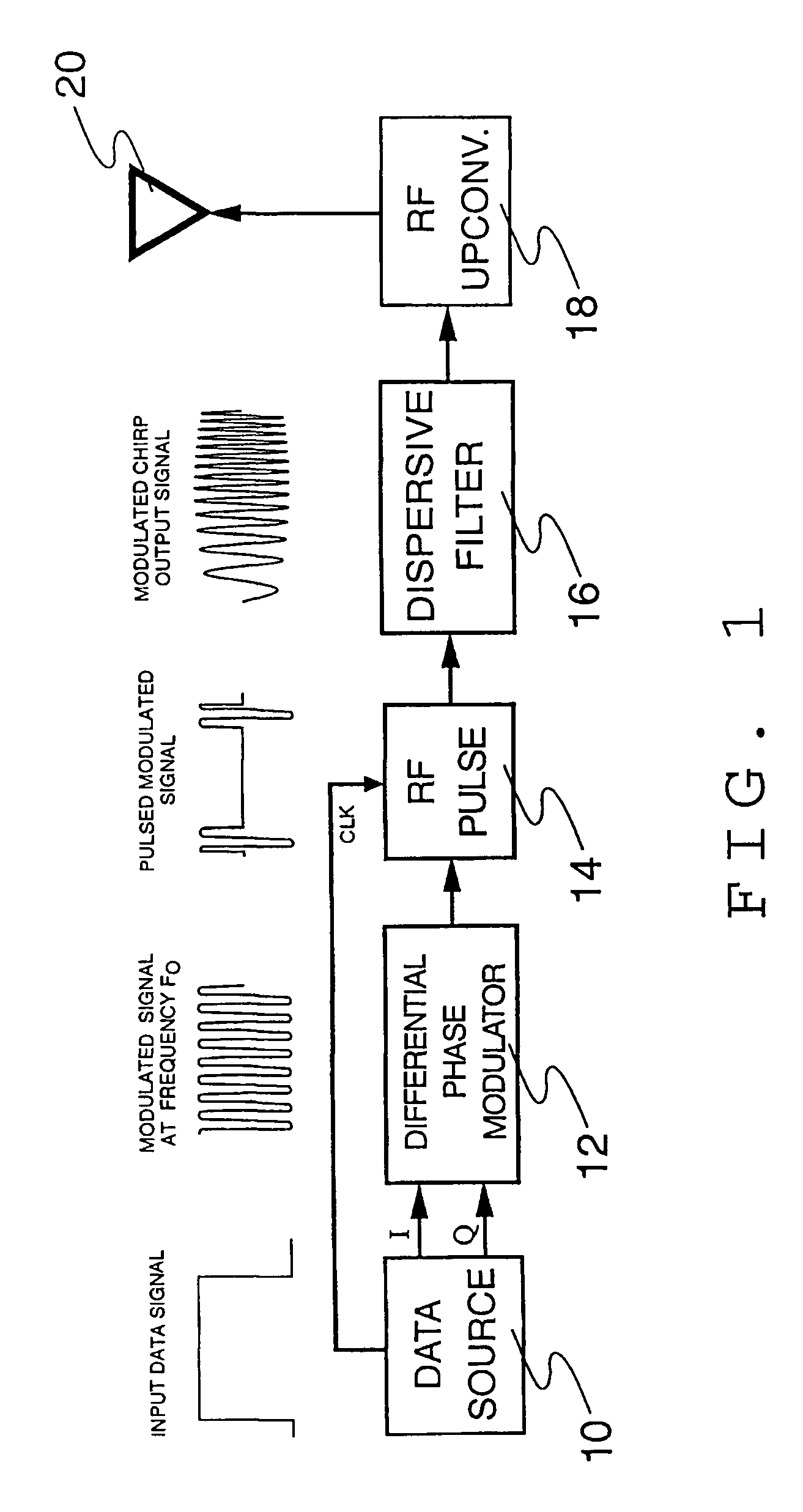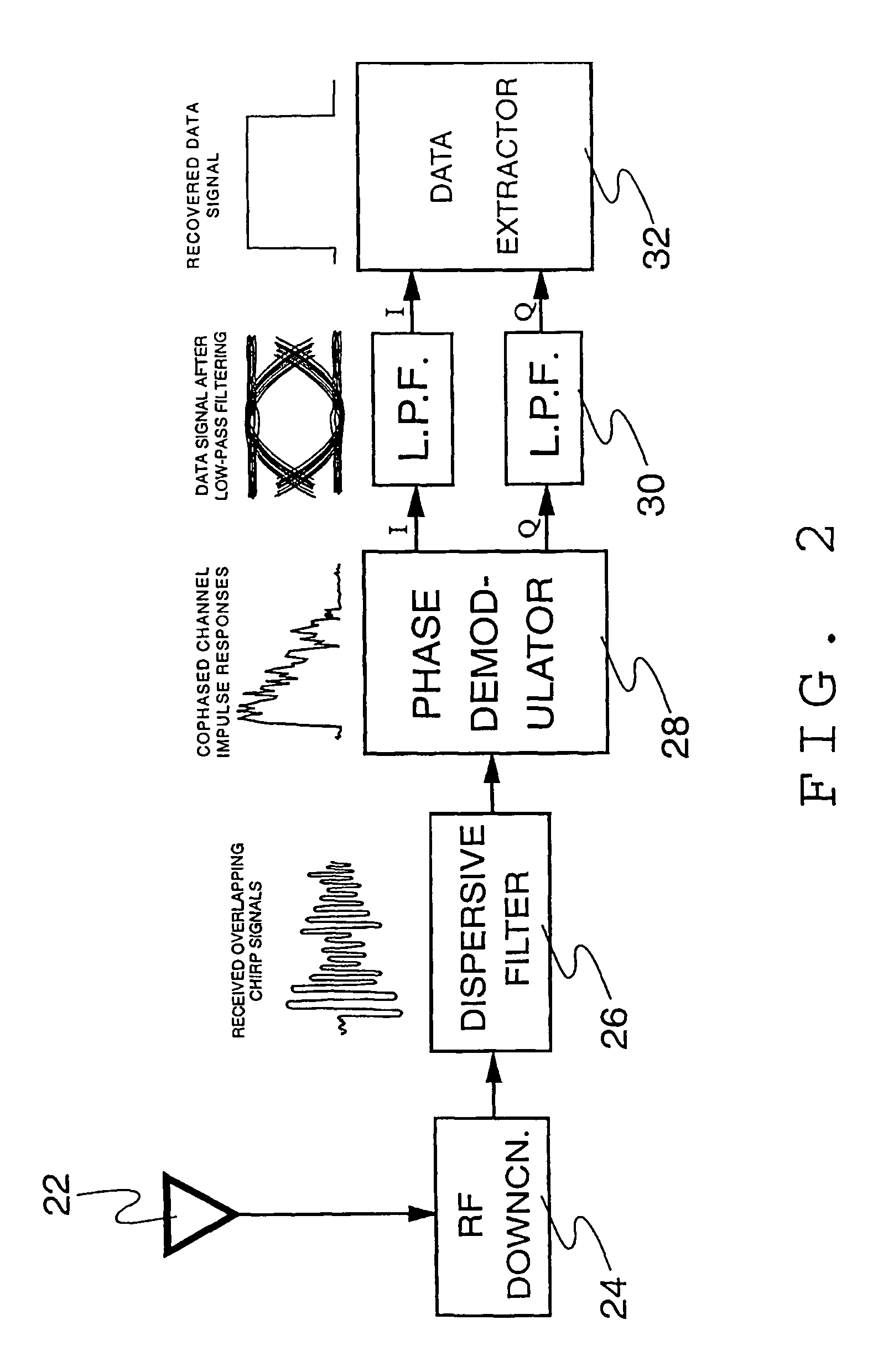High-speed indoor wireless chirp spread spectrum data link
a technology of spread spectrum and wireless chirp, which is applied in the field of high-speed indoor wireless chirp spread spectrum data link, can solve the problems of reducing the speed at which any signal processing has to operate, and the lengthening of the spread signal reduces so as to achieve simple hardware realization, prolong the duration, and reduce the speed at which any signal is processed
- Summary
- Abstract
- Description
- Claims
- Application Information
AI Technical Summary
Benefits of technology
Problems solved by technology
Method used
Image
Examples
Embodiment Construction
[0029]The basic apparatus which performs the operations described above consists of a transmitter (FIG. 1) and a receiver (FIG. 2). The transmitter's function is to modulate the data onto chirp signals and transmit these signals over the channel. The receiver's function is to recover the transmitted signal and reconstruct the original transmitted data. FIG. 6 and FIG. 7 show the transmitter and receiver schematics for the first enhanced version of the device, and FIG. 9 shows the receiver schematic for the second enhanced version of the device.
[0030]The schematic diagram of the basic transmitter is shown in FIG. 1. Also included in FIG. 1 are approximate plots of the signals at each stage of the device. Data from a data source 10 (which may be a computer or other digital information producing device) is fed into a differential phase modulator 12 which differentially encodes it onto a carrier. The encoding scheme should be a differential phase modulation scheme such as DPSK, DQPSK or...
PUM
 Login to View More
Login to View More Abstract
Description
Claims
Application Information
 Login to View More
Login to View More - R&D
- Intellectual Property
- Life Sciences
- Materials
- Tech Scout
- Unparalleled Data Quality
- Higher Quality Content
- 60% Fewer Hallucinations
Browse by: Latest US Patents, China's latest patents, Technical Efficacy Thesaurus, Application Domain, Technology Topic, Popular Technical Reports.
© 2025 PatSnap. All rights reserved.Legal|Privacy policy|Modern Slavery Act Transparency Statement|Sitemap|About US| Contact US: help@patsnap.com



